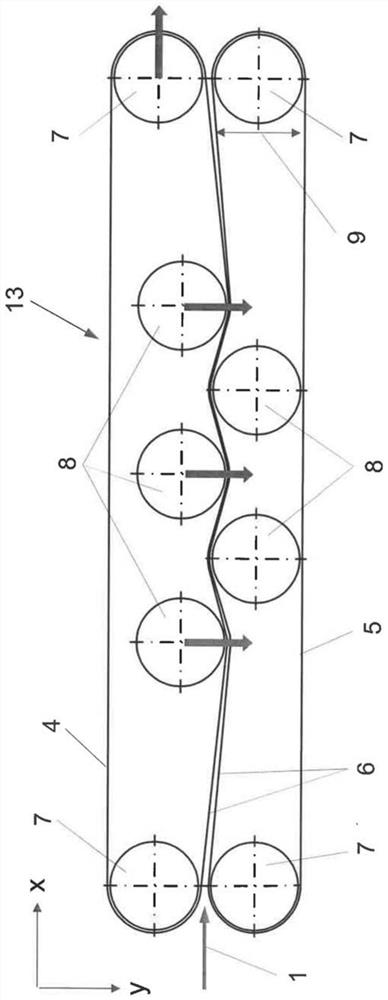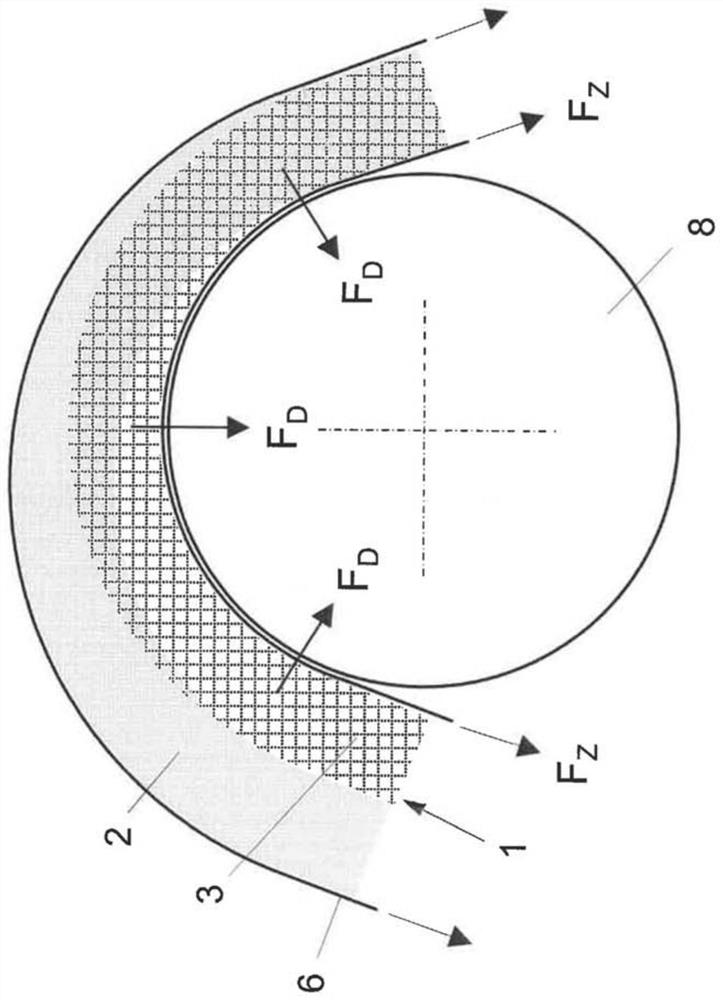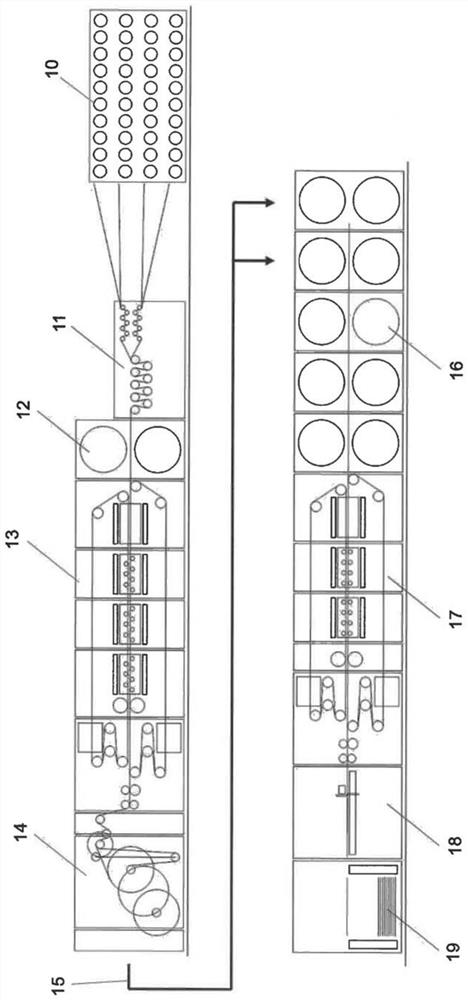Impregnation plant and method for impregnating textile sheet material for composite components
A technology of textile fabrics and impregnation equipment, which is applied to the processing of textile materials, textiles and papermaking, chemical instruments and methods, etc., and can solve problems such as independent belt systems that are not recorded
- Summary
- Abstract
- Description
- Claims
- Application Information
AI Technical Summary
Problems solved by technology
Method used
Image
Examples
Embodiment Construction
[0034] figure 1 Shown is an impregnation device or impregnation module 13 (refer to image 3 ), which has two corresponding belt loops 4,5. The first belt loop 4 and the second belt loop 5 are formed by respective endless closed belts which have deflection rollers 7 at their deflection areas and between which a plurality of further roll 8.
[0035] The belt loop region 9 is tensioned between the upper side and the lower side by deflection rollers, on which deflection rollers the corresponding endless closing belt is guided. exist figure 1 The first belt loop 4 shown above has three further rollers 8 arranged between two deflection rollers 7 and forms a surface 6 corresponding to the figure 1 The second belt loop 5 shown below. That is, the lower side of the belt loop 4 and the upper side of the belt loop 5 are inclined to each other. The textile fabric 1 is passed between the mutually inclined surfaces 6 and is subjected to a corresponding pressure which ensures that the...
PUM
 Login to View More
Login to View More Abstract
Description
Claims
Application Information
 Login to View More
Login to View More - R&D
- Intellectual Property
- Life Sciences
- Materials
- Tech Scout
- Unparalleled Data Quality
- Higher Quality Content
- 60% Fewer Hallucinations
Browse by: Latest US Patents, China's latest patents, Technical Efficacy Thesaurus, Application Domain, Technology Topic, Popular Technical Reports.
© 2025 PatSnap. All rights reserved.Legal|Privacy policy|Modern Slavery Act Transparency Statement|Sitemap|About US| Contact US: help@patsnap.com



